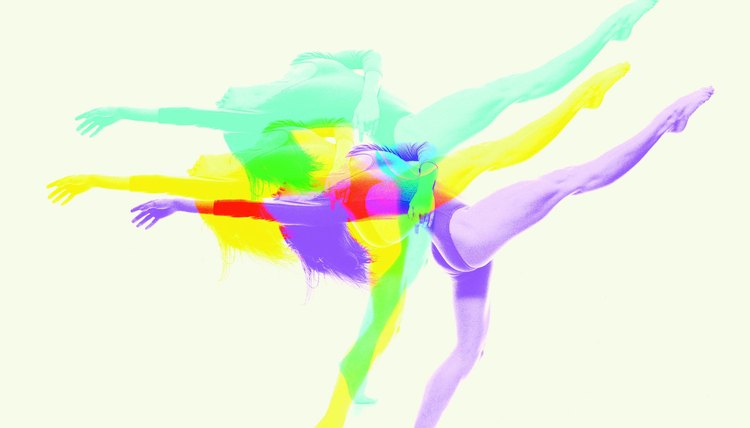List of Intermediate Jazz Dance Exercises

If you are tired of the jazz square and kick ball change, you may be ready to move on to intermediate jazz. Intermediate jazz is more than new steps -- it's about combining beginning steps in new, complex ways and adding your own flair. There are, however, some moves you can add to your repertoire and combine for choreography.
Pas de Bourrée
Pas de bourrée is a jazz step borrowed from ballet. While some teach it as a beginning step, when you add arms and turn the step, it becomes an intermediate move. A simple pas de bourrée is three small steps: one back, one side and the final either front or to the opposite side. You can change how you do the three steps. For example, the first two could be on the balls of your feet and the last one on your whole foot in a plie. Other options include all steps on your toes, all in plie or all with a slight jump. To turn the step, pivot your body toward the foot that steps behind and make all the steps closer together. You can do a half turn to start, and then work your way to a whole turn.
Layout
A layout is an iconic jazz dance move that looks much harder than it is. Before you try a layout you should warm up your back muscles, as it includes a backbend. To get momentum to go into a layout, start from a chaine or chasse. Kick your right leg forward in a grand battement while simultaneously arching your back as far as you can. Open your chest as you arch and pull your shoulders down to create a beautiful line with your body. The toe on your right leg should be pointed with your standing leg bent and your kicking leg straight. Hit the layout sharply and hold it for at least a full count in the music -- imagine someone taking your picture in the pose.
Pencil Turn
Pencil turns are understated, but take considerable technique to execute. Start from a ball change position with right foot back in plie. Push off your back foot and spin over your right shoulder with both knees straight. Pencil turns aren’t about how high you can kick, so kick your free leg only a few inches off the floor and point your toe. Balance is key for this step, so focus on good posture and tighten your core muscles while you turn. Think of your right leg as a pencil and your pointed toe is the sharp tip.
Hitch Kick
Hitch kicks look a bit like a martial arts move, so imagine kicking an invisible enemy when learning them. One knee comes toward the chest and as that leg goes back down, the other leg kicks straight in front as high as you can. Both legs will be in the air at the same time but doing different things, making this a challenging move. Start by only jumping a bit off the ground, then try to get several feet off the ground as you get more advanced.
References
Writer Bio
Kelly MacGregor holds bachelor's degrees in news-editorial journalism and ecology/evolutionary biology from the University of Colorado at Boulder. In addition to writing for the "Colorado Engineer Magazine," the "Boulder Daily Camera" and EdNews Parent, MacGregor's work has been picked up by the "Colorado Daily," EdNews Colorado and the "Denver Post."
